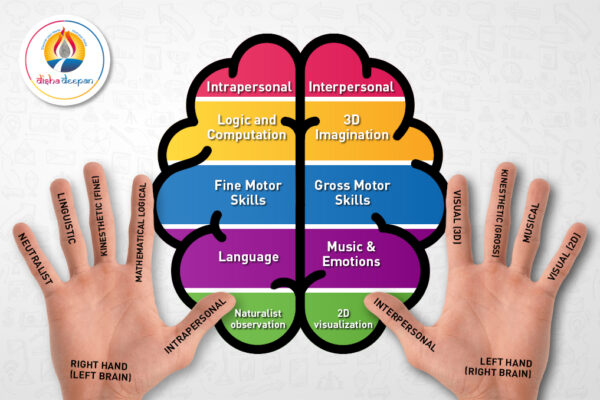Need Help?
Please Feel Free To Contact Us. We Will Get Back To You Within 1-2 Business Days.
Email: deepti@dishadeepan.com
Phone: +919818037087
Quick Contact
SCIENCE BEHIND DERMATOGLYPHICS
The term dermatoglyphics is derived from the two Greek words namely “Derma” meaning Skin and “Glyphics” meaning curve in simple words Skincurve. Dermatoglyphics is the scientific study of fingerprints. The study also reveals that the fingerprints help to know one’s behavioral patterns and with the help of proper guidance a person’s life can be changed by making the necessary changes. The term was coined by Dr Harold Cummins, the father of American fingerprint analysis. Dr. Harold Cummins invented dermatoglyphics in 1926, he studied and disclosed all the aspects of the fingerprints from anthropology, embryology, and genetics. Dr. Harold Cummins utilized his experience of his work and set the standard in the field of dermatoglyphics. Cummins methodologies are still used as important tools in finding the genome and evolutionary relationships. In humans and animals, dermatoglyphics are present on fingers, palms, toes and soles. During the critical period of embryogenesis between 13th week to 21st week, the fingerprints and the human brain develop together, along with the architecture of the other major organ systems. The 10 fingers of the human hand represent the 10 lobes of the brain with a diagonally opposite correlation. Fingertips or nerve endpoints are formed when the child is in the womb and they never change with age (also used as a proof of identification for a lifetime).

No two people have the same fingertip profile (Even twins do not have the same genetic makeup, hence their fingertip profile too varies from each other). People with 6 fingers – their 6th finger either has the same fingertip profile of the nearest finger or no profile at all.
Fingerprints are often used to make formal identifications and are still used as evidence in linking a suspect to a particular crime scene. Despite the value of fingerprints in forensic investigations, relatively little work has been carried out into plantar dermatoglyphics. Footprint identification using dermatoglyphic features of the plantar surface is regarded as being no less valuable, where available, than identification by fingerprints. If plantar friction ridge detail is observed, then a positive identification can be made in exactly the same way as fingerprint identification.

Dermatoglyphics is a branch of human morphology that studies the skin relief of the palms and soles, where the skin is covered with patterns of numerous ridges (papillary lines) also called as- fingerprints on the finger endpoints: is unique for each person. Although fingerprint patterns present in every human is not unique, it is the minutiae which as a variant of bifurcations/ islands/ forks et lead each person’s fingerprints to be unique! DMIT helps understand the Inborn skillsets of humans.
DMIT is a technique which is used to identify the Natural skillsets which a human is born with using the unique fingerprints as inputs and applying the forensic developed methods to arrive at the “Quantitative & Qualitative” positioning of the 10 lobes of the human brain. This identification can relieve the person of stresses arriving due to pursuance of activities not naturally suited to that brain. DMIT also gives a lot of health preventives based on the knowledge present in ancient Indian manuscripts.
